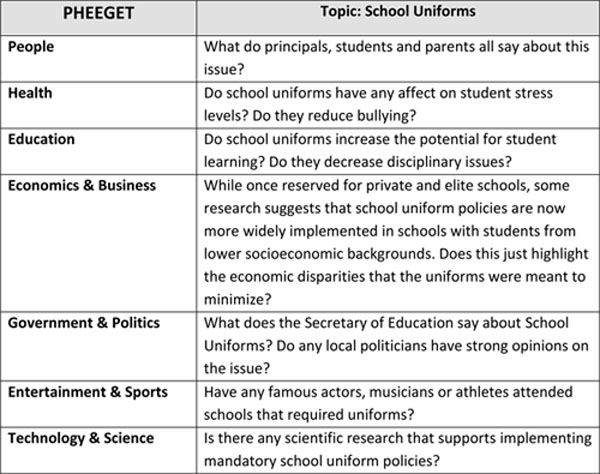- MN ABE Connect
- Archive
- Plan First, Write Second
Plan First, Write Second
Stephanie Sommers, InstructorIn my current position at Minneapolis Adult Education, I help students improve their writing. Although we primarily focus on essay writing for the GED, we touch on many aspects of academic and professional writing in the class. For example, I explicitly teach my students to use planning tools, such as graphic organizers and outlines, in order to organize their ideas before starting to write a first draft. What I have found, however, is that many students start out in my class feeling like pre-writing activities are a waste of time. They tend to want to focus on the product, the finished paragraph or essay, more than the process of planning, writing, and revising.
 One of my goals is to show my students how spending time in the planning stage pays off in a better finished product. I was very pleased, therefore, when I attended several writing sessions at the 2015 COABE Conference in Denver and found other writing teachers putting the same emphasis on planning and pre-writing activities. In this brief summary, I will provide an overview of one of these techniques.
One of my goals is to show my students how spending time in the planning stage pays off in a better finished product. I was very pleased, therefore, when I attended several writing sessions at the 2015 COABE Conference in Denver and found other writing teachers putting the same emphasis on planning and pre-writing activities. In this brief summary, I will provide an overview of one of these techniques.
This technique, shared by a group of presenters from Texas, is a method of getting students to think about all of the ways that a topic could be discussed or explored by using the acronym PHEEGET. This stands for: people, health and health care, education, economics and business, government and politics, entertainment and sports, and technology and science. The premise behind this technique is that most, if not all, topics can be thought about in relation to these seven key issues.
Essentially, PHEEGET is a way to give structure to brainstorming. Beginning level students would likely be overwhelmed by trying to brainstorm ideas for all seven issues at once, but the method could easily be scaffolded by choosing only one or two of the issues to begin with. It would be even more successful if students were taught to also apply the method when reading texts by looking for sentences and paragraphs that relate to one of the seven key issues. When done routinely, I think this would be a very smart approach for integrating reading and writing instruction, and it provides a systematic way for students to categorize important academic language. The following chart shows an example of how PHEEGET might be applied to a given topic:

After completing this initial brainstorm, a student could choose to focus on one or several of these key issues to explore in more detail in an essay or paragraph. For more examples of how to use the PHEEGET technique, check out these two resources:

Newsletter Signup
Get MN ABE Connect—the official source for ABE events, activities, and resources!
Sign UpArticle Categories
- ABE Foundations/Staff Onboarding
- ACES/Transitions
- Adult Career Pathways
- Assessment
- CCR Standards
- Citizenship
- COVID-19
- Cultural Competency
- Digital Literacy/Northstar
- Disabilities
- Distance Learning/Education
- ELA
- Equity/Inclusion
- ESL
- HSE/Adult Diploma
- Listening
- Math/Numeracy
- Mental Health
- Minnesota ABE
- One-Room Schoolhouse/Multilevel
- Professional Development
- Program Management
- Reading
- Remote Instruction
- Science
- Social Studies
- Speaking/Conversation
- Support Services
- Teaching Strategies
- Technology
- Uncategorized
- Volunteers/Tutors
- Writing